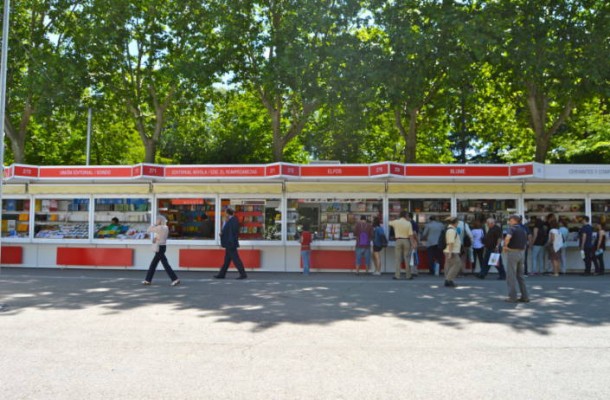MADRID, SPAIN. When I was little, I used to love the book fair, but not for the right reasons. I anticipated the time that I got to spend out of the classroom and spent money on the fuzzy pens that ran out of ink in two days instead of actual books. If I wasn’t looking through the trinkets, I would browse the aisles, looking for books with the eye-catching covers or by authors I already knew quite well. Only being in grade school, what I hadn’t realized is that a book fair is much more than a section of time I didn’t have to work on math problems or a place to buy fuzzy toy pens, it’s a demonstration of culture.
Fería del Libro is an annual book fair hosted in Madrid, Spain in the famous Retiro Park. Since 1933 the fair has been slowly growing and evolving. From it’s beginning, it has been hosted by various cities of Spain including Barcelona, but by 1967, Retiro Park in Madrid was named the home of the event. With over 300 stands to choose from, author book signings, and various book talks, tourists and native Spainards alike can walk down the endless street of books to explore selections of Madrid’s libraries, book distributors and editorial businesses.
Having only been in Spain for about two weeks, the 300 stands were slightly overwhelming. Retiro Park in itself is larger than New York’s Central Park, and the long winding street of Spanish literature wasn’t what my college Spanish classes had prepared me for. It took me about an hour for me to realize that I was walking through my own cultural Spanish class—one I hadn’t taken before. There were books about technology, history, children’s books, English books translated into Spanish, and just about every topic you could imagine. In fact, the people surrounding me were just as eclectic as the selection of books.
Feeling like the only American in a swarm of Spanish customs, I may have flocked to the stands with English translations or authors that I recognized at first, but with every new stand, I began to appreciate what was around me. Even though walking up to different stands was intimidating, the more questions I asked and the more stands I visited, the more I learned about Spain— stands about Don Quijote, about past monarchy of Spain, about the history of music, popular children’s bed time stories, thousands of native Spanish speakers and thousands of books that each held a piece of Spanish culture. In a short time, Fería del Libro was no longer a place where I could simply buy a book to help out a library, author or company, it was a place to immerse myself in a new tradition.
Fería del Libro has expanded just as Spain has over the years, but the importance hasn’t changed. A visitor can buy a brand new book or a book that has been reprinted for thousands of years. Books will always be read, no matter what format someone reads them on, but the importance of the words and the history will always stay the same. Fería del Libro isn’t just a street full of vendors looking for money—it’s a winding road of culture.
More information can be found at http://www.ferialibromadrid.com/index.cfm.

